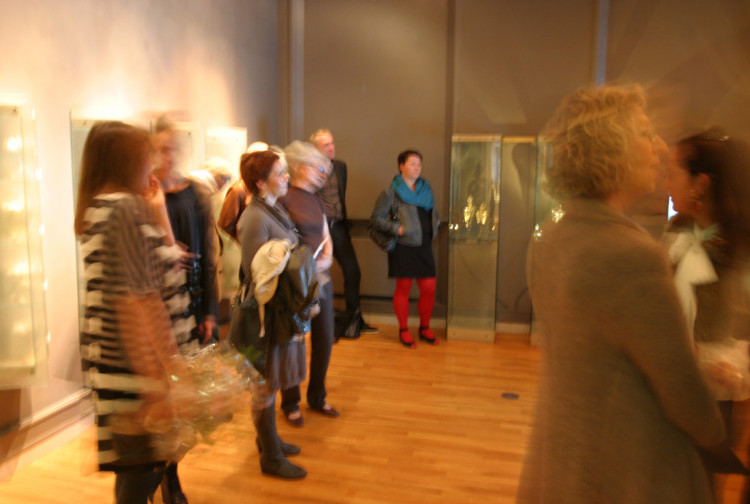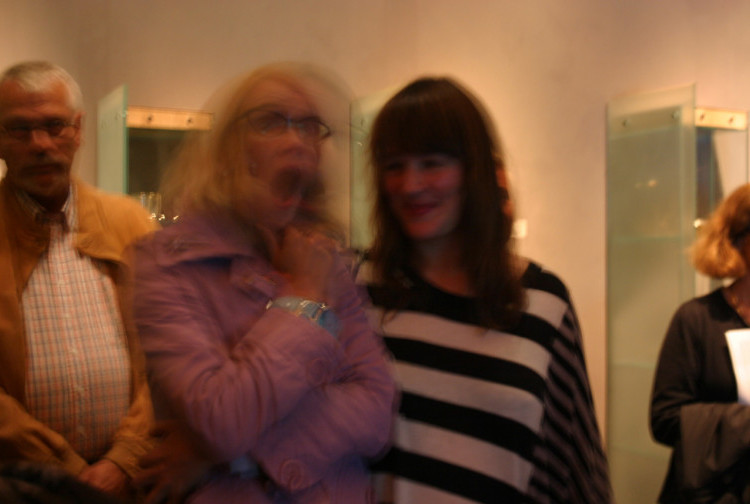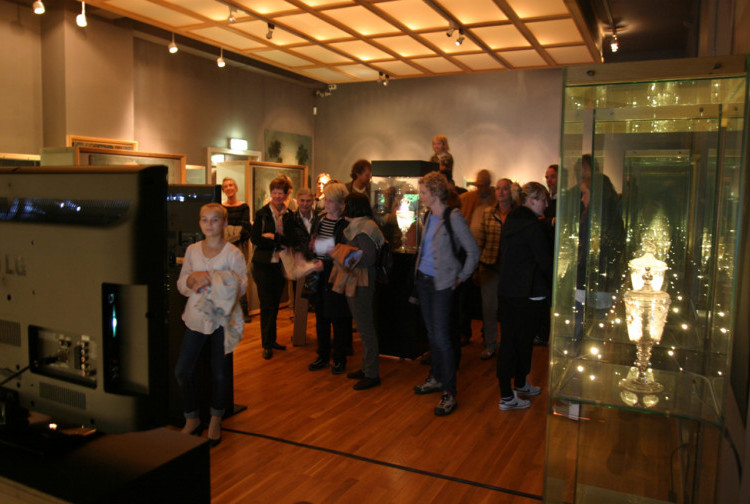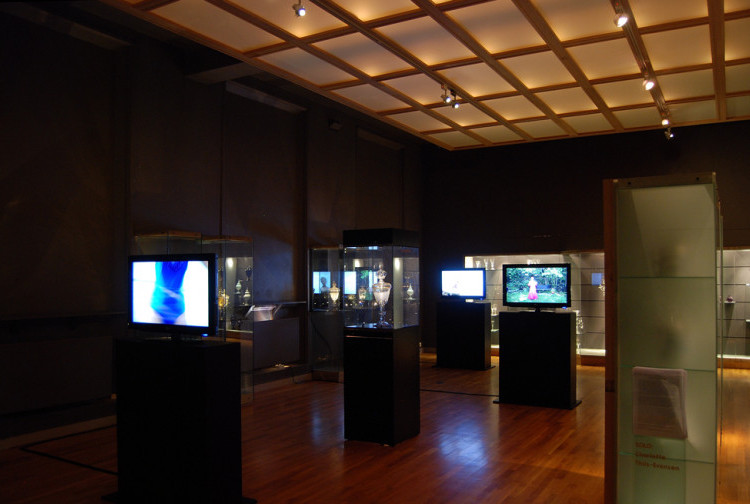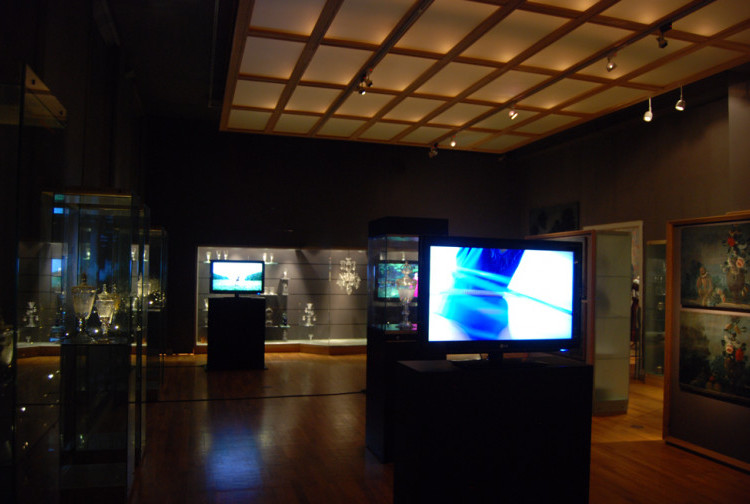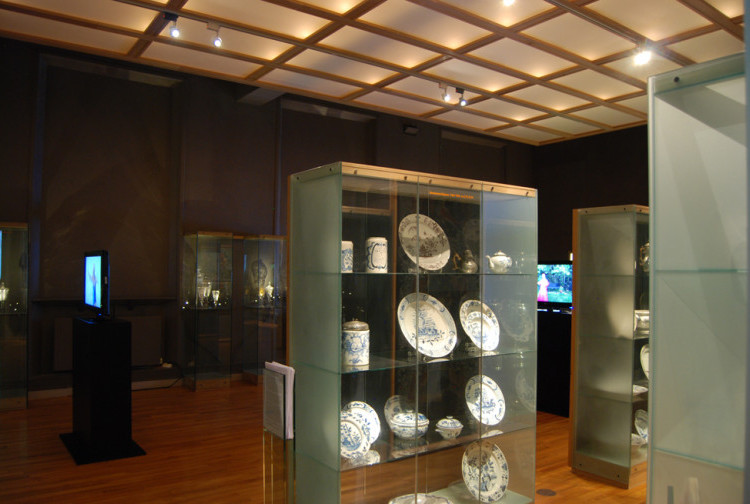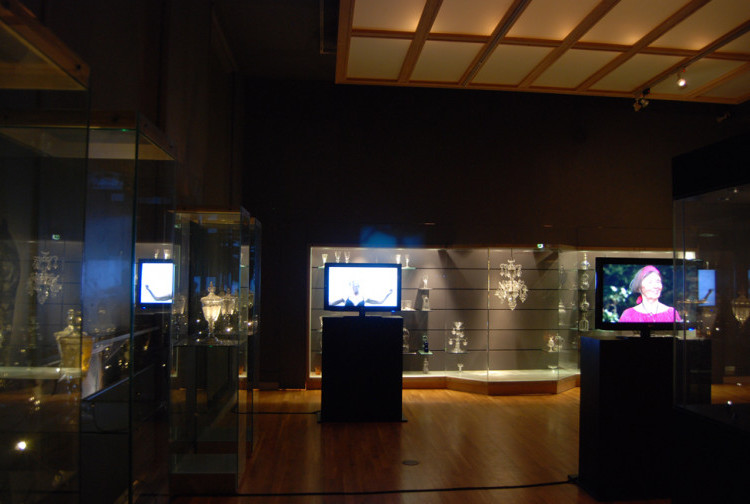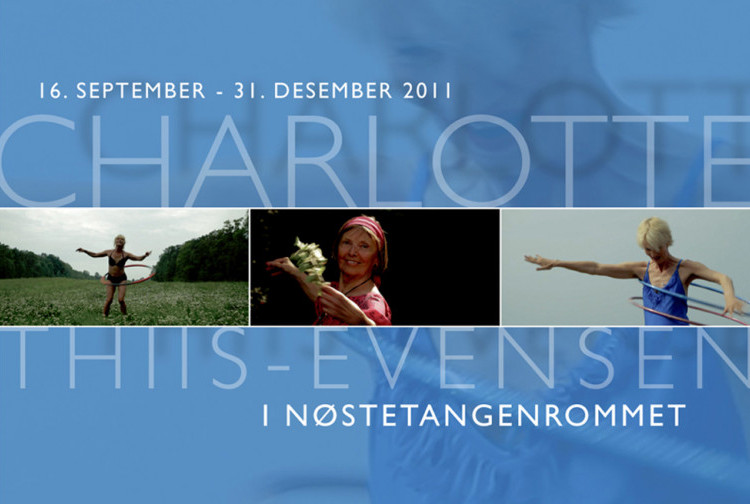Charlotte Thiis-Evensen
Falling Trees - a 3-screen video installation
Some things have always interested people, namely how we appear to each other - and ourselves. Ever since antiquity, this self-reflection has been linked to body ideals. Links such as youthfulness and power, vitality and beauty, maturity and character, old age and wisdom, fertility and sensuality have in various ways inspired artists to the long line of figure representations that characterize art history. In recent times, alongside the liberation of women, there has been an increasing focus on the relationship between femininity and age. The ideal of Western media culture has for some time been youthful, flirtatious femininity. This has nourished the plastic-surgical masquerade of our time, and an entire beauty and fitness industry has supported it. Against this tendency, where the inevitable aging is tried to counteract, there is an alternative, where the body and aging are linked to health and well-being. In this counterculture, women say to themselves and the rest of us, "Woman loves your body." It is precisely this trend that Thiis-Evensen captures in her new video work, in which three well-adult women, lightly and casually dressed, dance freely or with rocking. They do not hide their age, but they give a natural expression to the musicality and well-being of their bodies, a well-being that is read in the work in movements and facial expressions.
Thiis-Evensen's work is made in a modern medium, which i.a. is used to make interviews and other features in the television reality Thiis-Evensen for daily work, as a journalist in NRK's culture department. This is a not insignificant connection, because it is through her background as a professional TV employee that she has trained a form of communication, where the people she meets to make a feature or an interview enter a situation that is basically both natural, honest and revealing, and yet somewhat artificial. It is not possible to be filmed by a modern camcorder without being aware that this is to be shown in a mass medium or in a showroom. Thiis-Evensen has her own ability to make people shrug their shoulders and make them appear as unartful as it is possible to be in front of a camera, and she cultivates this quality in her artistic projects.
As early as 1976, video art was defined as a narcissistic medium by the well-known art historian and critic Rosalind Krauss. The reason for this was not only that some of the pioneers of video art such as Peter Campus, Hannah Wilke, Martha Roesler, Joan Jonas, Bruce Nauman, Vito Acconci and Dan Graham used their own face and body as a motif, but also in general that video filming is a egocentric mirroring instrument, where the recording can be seen immediately on the screen. The well-adult women in the work Trees that fall are of course aware of this, and they then also use the old insights they have in their past as younger girls on gymnastics and training, with rocking or other exercise equipment. They are also conscious of their training suit, and from a generational point of view, they fit in well with both the hippie movement's unstructured free dance and the gym wave that Jane Fonda became a symbol of. That it was a movie star after his career in front of the camera was mostly over, who was responsible for this, is quite typical. For it has been a much-publicized problem for middle-aged actresses, that there are so few roles for them. Occasional older women could remain stars, such as Bette Davis and Katherine Hepburn, and more recently with Diane Keaton, Meryl Streep, Helen Mirren and Sally Field. And it is this age group we meet in Thiis-Evensen's work. Today, women in their 60s have clear role models, although we hear that age can still be an issue for women in front of the TV camera in our image-consuming and image-eroticized age.
The title of the work, Trees That Fall, is taken from a novel of the same title by the Austrian author Thomas Bernhard. Trees, like bodies, age, and eventually they break down and fall, just like facial skin, breasts and waist. But it is not the melancholy that characterizes Thiis-Evensen's work; rather, we encounter a pleasure that shows that the increased leisure time that pre- and early retirement life offers can be utilized through a continuation of activity that has been done earlier in life. Exercise is good for body and soul, and rocking is excellent for keeping the waist slim. The facial expressions in marked, slightly wrinkled faces show an familiarity with and joy of having a body that works and that can move rhythmically and to music. The work also shows that femininity is more comfortable in nature than in built environments. All three women rock and dance outside, each in their own natural habitat. One rocks on a boulder with the crashing of waves in the background, one stands and rocks in the middle of a meadow, like "the doll in the grass" or "the cow in the green meadow". While the third, not as slender and fit as the other two, dances in loose, reddish gloves, where the figure is loosely defined and goes beyond the border of a clearly defined body figure and into the fleeting movements of the gloves and into the orchard branches and foliage.
All three situations thus emphasize the well-established and very strongly traditional connection between femininity and nature, between the female body and the landscape. And we are reminded that it is a free, fluid, rhythmic, folded and continuous flow - that which constitutes "the fluid mechanics" - which is the most apt expression of femininity. This is a way of looking at femininity that characterizes parts of the most radical 1970s feminism, ie women's theory from the time when these women were in their 20s and 30s and were shaped as adult individuals. A very important part of this thinking was to separate the feminine from the masculine, which was defined as something logical, rigid, phallic, rigid and clearly delimited. It was equally important to remove the definition of femininity from the theory of the significance of the gender difference, that femininity was something that was determined on the basis of a relationship to the masculine. Through a rather harsh critique of the psychoanalytic emphasis on the meaning of genital gender difference, a settlement was made with the notion that femininity was not something in itself, but something that was defined in dependence on and in contact with the male.
In recent feminist theory, it is pointed out that femininity is of course something in itself, something that exists and unfolds without being addressed to or conditioned by anything masculine. And this is exactly what is so visible in this work. None of these three women relate to a partner, this is not a couple dance or mixed double, no flirting or any attempt at a connection to another body. They are alone with themselves, individually in their natural surroundings. And judging by the facial expression especially in the one judging, this can almost give an ecstatic experience.
At the exhibition in the Nøstetangen room, this mature and proud sensuality will be played out against the old, fragile cultural monuments in the room. Thus, some of the hope that lies beneath this project, the so-called Solo project at Drammens Museum, will once again be fulfilled. The goal has always been to give contemporary art the opportunity to play out against a depth of historical art treasures, and that this and that encounter brings movement and sensuality back to these beautiful objects, all of which were made to be used in physical contact with hands and lips in social contexts where people met for a party. The fleeting movement that has long been taken from glass and silver can be found again in Charlotte Thiis-Evensen's Three Gratiers. There is also a contemporary generosity in the fact that they are equated. No one wants to be the Trojan Paris here, who has to choose between the goddesses Hera, Athena and Aphrodite to give a golden apple to the one who is "the friendliest". Even such a competition, which implies flirtation and courtesy, is superfluous here. It is a bygone stage, not only historically, but also personally. Here we hear another song.
Åsmund Thorkildsen
Museum director and curator of the Solo project
The term is a translation of the term "Mechanics of Fluids", which Luce Irigaray points out in the book This Sex Which is Not One (1974). The term is a translation of the term "Mechanics of Fluids", which Luce Irigaray points out in the book This Sex Which is Not One (1974).

